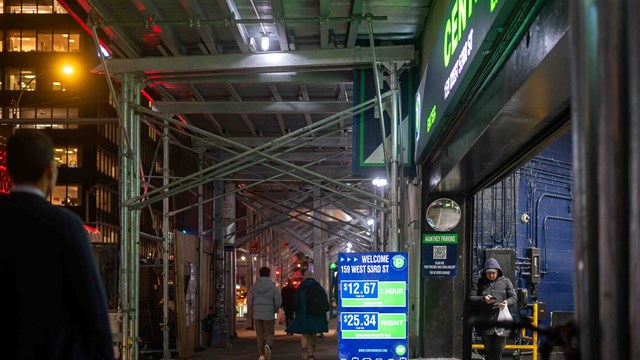In a widely publicized 2000 case, the New York Supreme Court (First Department) issued a judgment annulling New York City's then-newly enacted lead-based paint law, commonly referred to as Local Law 38. The case was immediately appealed, and throughout 2001, confusion prevailed as to which lead paint regulations were actually in effect.
On Tuesday, March 26 of this year, the Supreme Court's decision was reversed on appeal. The Appellate Court's unanimous opinion (New York Supreme Court, Appellate Division, 1st Department) supported what is described as the central premise of Local Law 38: namely that monitoring and containment - rather than total removal (abatement) of lead paint - reduces environmental threats to human health.
In his opinion for the court, Associate Justice John T. Buckley wrote, "Nullifying Local Law 38 would reinstate the prior lead-based paint prevention law (Local Law 1), which was based on removal - not containment - and thus pose a greater threat to public health. If affirmed, it would place the City of New York in immediate contempt of outstanding orders in former litigations over Local Law 1 and leave the City without any effective and safe methods of dealing with the persistent lead paint hazards."
The court also found that the City Council sufficiently reviewed all salient issues - including effects on the environment - before crafting Local Law 38, which struck the court as a "suitable balance of social, economic, and environmental factors."
The controversy did not end with this long-awaited decision, however.
A new bill, known as the New York City Childhood Lead Poisoning Prevention Act of 2002, was simultaneously introduced by a majority of council members for immediate enactment by the new City Council. This proposed act, which would replace Local Law 38, adds significant new definitions of what constitutes lead paint risks and places new obligations and requirements on owners. It would cast into law what the New York City Coalition to End Lead Poisoning (NYCCELP) and other public and environmental groups involved in the litigation failed to achieve in the courts.
Unbeknownst to many, Local Law 38 was temporarily annulled on February 21, 2001. The lower court was persuaded that, apart from the universally acceptable shift from abatement to monitoring and containment, there were significant items in the old Local Law 1 that were changed or eliminated when the City Council replaced it with Local Law 38. Among these items was the elimination of lead dust from the definition of lead hazards, lowering the age of children to be monitored from under seven to under six years of age, reducing the amount of lead allowable in paint before it reaches the legal definition of "lead-based," and allowing owners to remove lead paint violations without necessarily using the safety procedures prescribed by the New York Department of Housing Preservation and Development (HPD) and the New York City Department of Health (NYCDOH) in the first 21 days after a violation is issued.
Justice Louis B. York of the New York State Supreme Court found that these changes should have caused the City to conduct and issue an environmental impact study, instead of simply issuing a negative declaration that Local Law 38 would have no detrimental effect on environmental threats to human health.
The Appellate Court disagreed, and found that ample studies and debates were held before Local Law 38 was adopted. Rather than agreeing or disagreeing with the definitions, standards, rules, and methodologies contained in the law, the Court felt they only had to decide on whether the record supported a full airing of arguments before the final version of the lead paint law was codified.
The coalition of groups arguing against Local Law 38 in court were also arguing their case to sympathetic, newly-elected City Council members. The November election replaced the entire Council, and advocates for stricter lead paint rules saw this as an opportunity to sign their ideas into law. The proposed Childhood Lead Poisoning Prevention Act is sponsored by 30 Council members, and with such majority support in the Council, it is possible that New York City may have yet another lead paint law in the near future.
Significantly, the proposed new act adds provisions that would extend to all schools, day care centers, playgrounds, common areas in multi-family residential buildings, and even to private homes.
In addition, the proposed act would add lead dust to the definition of lead hazards, and would make the legal definition of lead-based paint more stringent. Definitions for conditions that could cause lead dust to be released into the air would be added to all visual inspection instructions. Dust clearance tests would be required to issue an owners' certificate of correction of a violation. Inspections would now look to underlying causes of deteriorated, peeling paint or evidence of friction or chipping, and require owners to correct those conditions as well.
Upon a new vacancy or apartment turnover, owners would be required to make the vacated apartment lead-safe by removing or covering all lead paint on the friction surfaces of windows and doors. The New York City Department of Health's official safety regulations would apply whenever lead hazards are repaired or abated, as well as during interior demolition work - including all apartment unit renovations. Owners would be required to provide temporary relocation of tenants during lead removal, if the work cannot be performed without risk to the tenants, and would have to follow the new law's provisions for disposal of lead paint debris. Currently, Local Law 38 has no disposal provisions.
The new act would also raise the age of children covered back to less than seven years of age. It would require additional action by landlords each year if residents fail to respond to the annual notice inquiring whether or not a young child resides in their unit. For noncompliance with the distribution of notices and inspection provisions, owners could be subject to fines and penalties - including imprisonment for up to six months. Inspections would, in some instances, be required more frequently than just once per year. Reporting and record-keeping requirements would be increased as well.
Finally, the proposed law would set long-range goals to cover and abate all lead-based paint and would add J-51 tax incentives to cover lead inspections and risk assessment, helping to defray costs to landlords and real estate owners.
For all these provisions to be approved, a thorough rehashing of contentious issues - most notably lead dust - will have to take place again. In past hearings, many real estate and landlord groups lobbied vigorously against regulating lead dust, arguing that since it can't be seen, to monitor it would require continuous testing - which would ultimately become economically untenable.
While the debates resume in the City Council, the coalition groups will also be weighing whether to raise the stakes by appealing the recent court decision to the New York State Court of Appeals. For some, that would be pressure enough to want a revised bill to be adopted quickly. For others, it would be a reason to slow the legislative process as much as possible, while waiting for New York's highest court to rule. And so the decades-long controversy is about to enter a new phase of legal and political maneuvering"¦but meanwhile, everyone in the real estate industry has to remember to learn and abide by the provisions of Local Law 38.







Leave a Comment